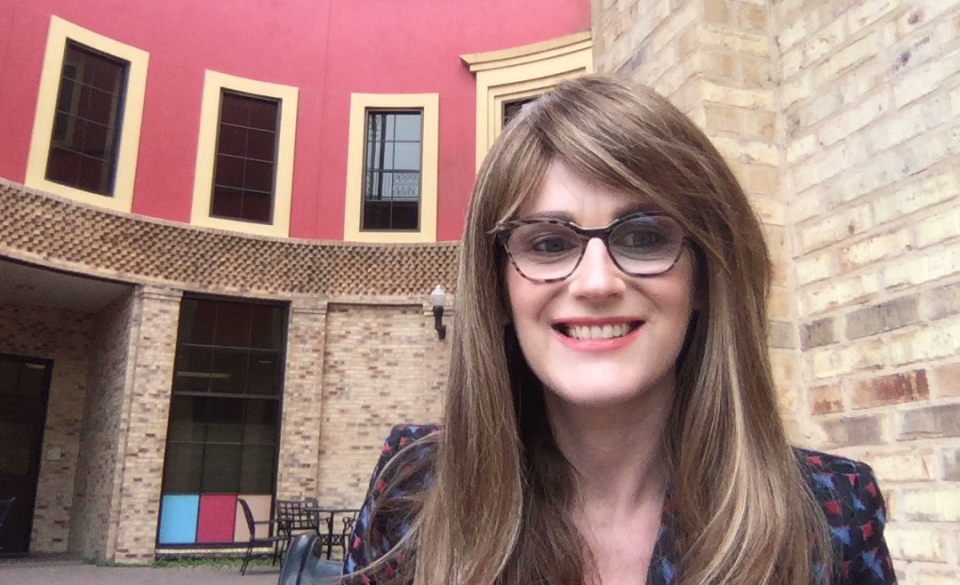By Victoria Brito
RIO GRANDE VALLEY, TEXAS – Have you ever wondered how many people have touched the dollar bill you have in your hand?
Just as a dollar bill circulates in the community, so does contagion – like COVID-19.
Dr. Elena Quercioli, assistant professor of economics and finance in UTRGV’s Robert C. Vackar College of Business and Entrepreneurship, and an international team of researchers are involved in studies examining the role human behaviors play in spreading contagion.
The research started in 2006 as research on counterfeiting and crime, and since has developed to examine pandemics. The team consists of Quercioli and:
- Dr. Jussi Keppo, associate professor, Department of Analytics and Operations, National University of Singapore.
- Dr. Marianna Kudlyak, research advisor, San Francisco Federal Reserve Bank.
- Dr. Andrea Wilson, lecturer / visiting researcher of economics, Princeton University.
- Dr. Lones Smith, professor of economics, University of Wisconsin-Madison.
- Sam Engle, Ph.D. in economics candidate, University of Wisconsin-Madison.
“This research started with examining everything that can happen when two people meet and trade,” Quercioli said. “Think about a dollar bill. You pass it on and it circulates to someone else.”
That initial idea sparked questions on a larger scale about human behaviors in the unintentional passing of fake money, and then was extrapolated to study viruses.
Using H1N1, more commonly known as swine flu, as an initial model, Quercioli contacted state health departments around the country to collect data for a large data set over a few years. Now, the work has been extended to study COVID-19 (coronavirus).
EXAMINING PANDEMICS AND CONTAGION FIGURES
Using an SIR model – an epidemiological model that computes the theoretical number of people infected with a contagious illness in a closed population over time – this research was conducted as a crossover from epidemiology to economics.
According to the Centers for Disease Control website, “Epidemiology is the method used to find the causes of health outcomes and diseases in populations. In epidemiology, the patient is the community and individuals are viewed collectively. By definition, epidemiology is the study (scientific, systematic, and data-driven) of the distribution (frequency, pattern) and determinants (causes, risk factors) of health-related states and events (not just diseases) in specified populations (neighborhood, school, city, state, country, global).”
“The purpose is to introduce a behavioral role in the SIR dynamics,” she said. “SIR is a mechanical model, rather than behavioral one. For example, if there are a number of people who are susceptible, then at a fixed rate, these people will become infected and they will recover and this happens again and again.”
Quercioli said that, for this research, the observation was that there is no function for behavior in the economics of pandemics.
“Pandemics can pass in people or animals,” she said. “But humans are rational, they can practice behaviors of containment. The problem is, those efforts are costly and that changes the dynamics.”
While individuals may unwillingly pass along a disease, people can practice social distancing avoidance to avoid disease, which we currently are seeing in efforts to contain COVID-19.
“People choose more vigilance or less vigilance based on how hard others try to combat the disease,” Quercioli said. “These are all the angles that change the benchmark SIR model that can make incorrect predictions. So, we thought that we could improve the predictions by using modified SIR models.”
Based on data collected for the H1N1 model, the research team concluded that their “behavioral SIR” model explains the data of both the H1N1 and COVID-19 more thoroughly than the “benchmark SIR” model.
The upshot? Their model predicts a less radical growth of contagion due to the vigilance by individuals.
When people act like rational individuals and practice safety measures, like social distancing, Quercioli said, the curve can flatten.
“Behavioral aspects are critical,” she said. “Vigilance changes the spread.”
VIRTUAL MACRO SEMINAR IN APRIL AND MORE
Quercioli and team presented their research at the Virtual Macro Seminar in April.
The virtual seminar was an open, online international and inter-institutional macroeconomics seminar.
“We were all online during the virtual seminar,” Quercioli said. “Dr. Lones Smith presented and the rest of us took the questions online so the person giving the talk isn’t bombarded by questions.”
Some 1,600 participants tuned in to the live YouTube feed, and more than 2,800 have since seen it on YouTube.
Since the virtual seminar, the group has presented at the Search and Matching COVID 19 Workshop, at the University of Chicago on May 14, and at a seminar in the Department of Economics at the Universidad de Montevideo in Uruguay on May 21.
Next, the group will present at a Federal Reserve Bank of New York virtual seminar on June 29.
ABOUT UTRGV
The University of Texas Rio Grande Valley (UTRGV) was created by the Texas Legislature in 2013 as the first major public university of the 21st century in Texas. This transformative initiative provided the opportunity to expand educational opportunities in the Rio Grande Valley, including a new School of Medicine and a School of Podiatry, and made it possible for residents of the region to benefit from the Permanent University Fund – a public endowment contributing support to the University of Texas System and other institutions.
UTRGV has campuses and off-campus research and teaching sites throughout the Rio Grande Valley including Brownsville (formerly The University of Texas at Brownsville campus), Edinburg (formerly The University of Texas-Pan American campus), Harlingen, Weslaco, McAllen, Port Isabel, Rio Grande City and South Padre Island. UTRGV, a comprehensive academic institution, enrolled its first class in the fall of 2015; the School of Medicine welcomed its first class in the summer of 2016, and the School of Podiatric Medicine in the fall of 2022.

